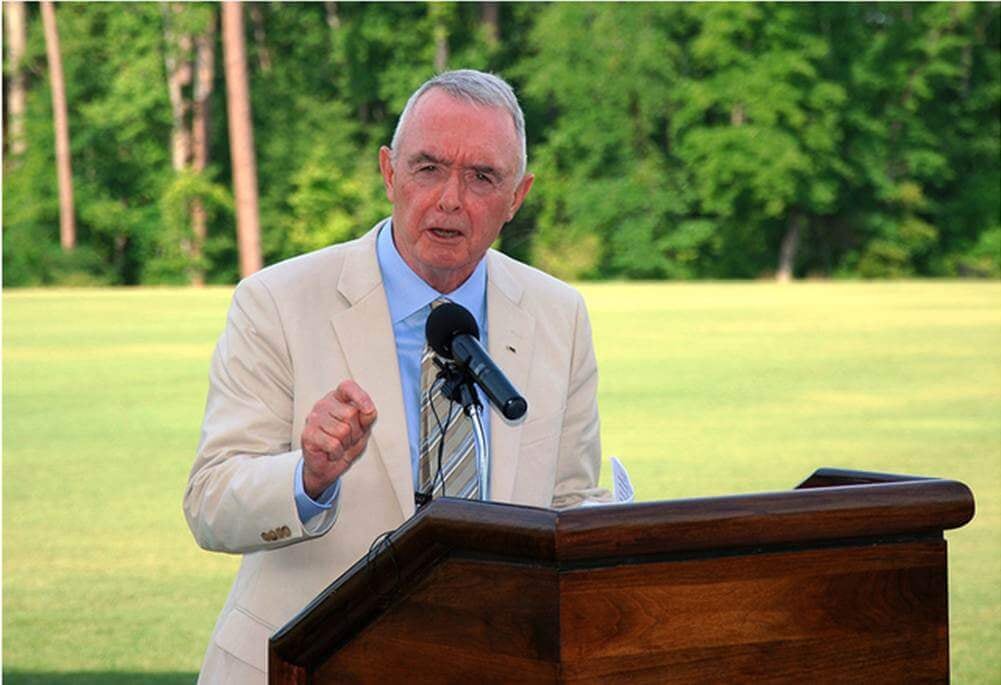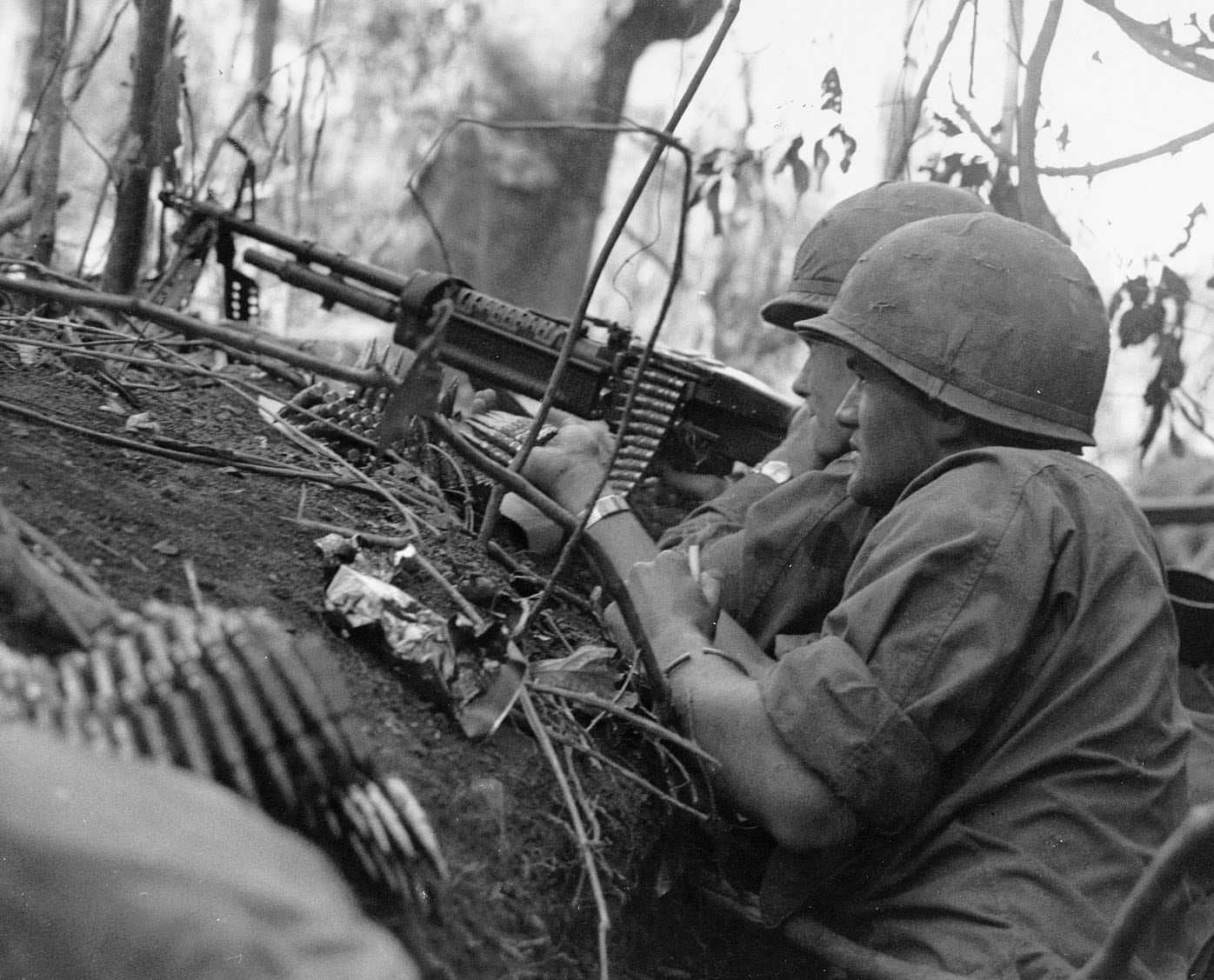The following commentary is part of an ongoing series that compares the challenges in Vietnam to the challenges service members face today. Stream episodes of the PBS series The Vietnam War here.
Vietnam has in many ways dominated 32 years of my professional life. The lessons I absorbed were in the forefront of my mind throughout my entire military service. At every promotion ceremony I would tell the attendees that I was assuming this new rank and responsibilities with the mindset of a combat rifle company commander.
The Vietnam War produced 58,000 US KIA and over 300,000 WIA. It was a demanding learning environment fighting against the very courageous and effective NVA.
Following a combat tour with the 82nd Abn Division during the Dominican Republic intervention, I then served in combat during 66-67 with the 2nd Parachute Battalion of the Vietnamese Airborne Division following almost a year of language and specialized training. The Airborne Division was a strategic reserve for the Army of the Republic of Vietnam and we deployed throughout the country wherever there was an emergency. They were superb and courageous troops.
My next combat tour in 68-69 was with the US 1st Cavalry Division as a rifle company commander. The division was optimized for this kind of war. The line troops were almost 100 percent draftees to include the young NCOs and most of the OCS Lieutenants. It was a brutal and grinding life of close quarters combat. My soldiers were very young and resilient with less than a year in the Army. They were extremely brave, creative, took care of each other, and were good team players. They were intolerant of poor leadership but would willingly and effectively fight if they had trust and confidence in their orders.
The 1st Sgt and I were both on our third combat tours and would be wounded for the third time commanding the company. We knew how to employ the power of the incredible 1st Cav artillery and attack helicopters. We received enormously effective support from U.S. Air Force Tactical Air and AC47s. The med-evac choppers were fearless life savers and under fire would winch badly wounded troopers up through the jungle canopy. We dug like moles and lived like animals. We were very lucky and worked hard 24 hours a day to stay alive and never be surprised.
My division CG George Forsythe came across the Normandy beaches as a rifle platoon leader. He knew what he was doing. A quiet, patient, and brave leader, he would land his command helicopter in my position and send out my wounded while he stayed on the ground. My brigade commander was a handsome, elegant man briefly punching his ticket in the field. He had no clue as to what he was doing as far as I could tell. Field grade leadership from 1968 on was a mixed bag. The WWII and Korean War vets were almost uniformly terrific.
Twenty years after last leaving Vietnam while conducting a field study of combat leadership for the US Army Chief-of-staff, I was commanding the 24th Infantry Division attacking into Iraq during Desert Storm. Almost all of the command sergeants major and full colonels and the three generals of the division were Vietnam vets.
What did our combat experience in Vietnam do to shape our leadership?
1st: We wanted to achieve a military victory not a political stalemate. We were grateful that we had leadership that knew what they were doing starting with the magnificent U.S. President George H.W. Bush. He had been an 18-year-old combat naval aviator fighting in the Pacific during WWII. Gen.Colin Powell the chairman of the Joint Chiefs, and Gen. Norm Schwarzkopf, the theater commander, had both been wounded in Vietnam combat ― as had my Corps commanding general Gary Luck. We had confidence the country was behind us. We understood our mission.
2nd: We had a massive ground technology and training edge over the Iraqi Armed Forces as well as a gigantic superiority of Naval and air power. We should never fight a fair fight against an adversary. The Iraqi Army outnumbered us and was a huge well equipped force ―– but they were like tethered goats waiting to be killed. They could not deal with the speed, violence, technology, and doctrine of air-land battle.
3rd: Since Vietnam we had heavily invested in leadership development. The NCO Corps were technical masters of their trade. They had honed their battle leadership skills at the National Training Center and Hoenfels and the Joint Readiness Training Center.
4th: The battalion and brigade commanders had been carefully developed on a command track. They had been in command at every level for two years or more. They had been selected by Centralized Command Boards. They had gone to extensive Pre-Command training. They were experts at their business and accustomed to running complex tactical ops.
5th: We used maneuver and surprise and electronic warfare and joint ops and MASSIVE smart bomb firepower in a coordinated manner to stun and paralyze the Iraqi forces. The targets were picked by professionals at tactical level ― not in the White House or Pentagon.
In summary, just before my division of 26,000 soldiers and 1,600 armored vehicles crossed the LD in the attack, I called a huddle with my two BG ADC’s and the C/S and the division CSM. BG Terry Scott closed the huddle by stating with considerable conviction that “he’d rather get killed than ‘____ this operation up like Vietnam.’”
That was the lesson of the Vietnam War to us. Use every available tool to destroy your enemy’s will to fight and achieve your purpose. Gain tactical dominance through hard work in training and preparation.
Finally, without the support of the American people, we cannot achieve victory.

Gen. Barry R. McCaffrey received two Distinguished Service Crosses and two Silver Stars for valor in Vietnam. He commanded the 24th Infantry Division (Mechanized) during Desert Storm and led U.S. Armed Forces





